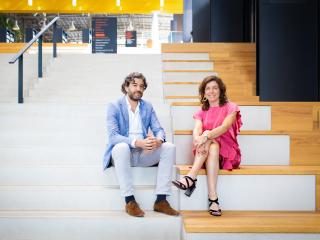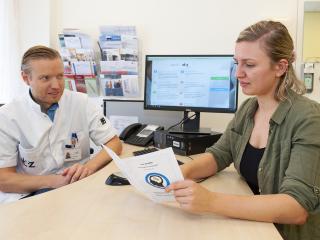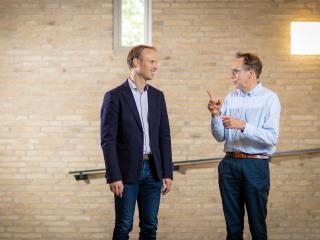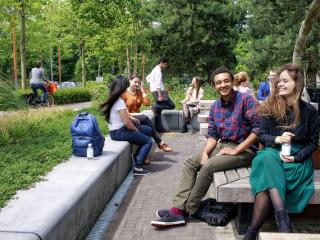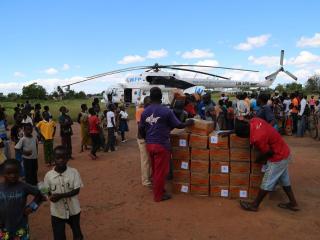TNO and Tilburg University conduct research on intervention “back to work”
Suppose you work and are fully involved in life. Then you get seriously ill and, in the early days, it is all about survival. How do you pick up your life and work after that? Often this turns out to be difficult, and people are unable or only partially able to get back to work. Together with TNO, Tranzo, the Tilburg University's Scientific Center for Care and Well-being, is conducting research into an intervention to better guide cancer patients back to work.
‘Staying at home after illness is a social problem'
An average of 116,000 people are diagnosed with cancer every year. After 5 years, 65% of them are still alive. A large part of this group was in employment at the time of the diagnosis. “Work plays a major role in the lives of people who are ill,” says researcher Margot Joosen. “Work is part of their identity, offers opportunities for growth, and provides financial security. We see that many cancer patients do not work during treatment and have little contact with their employers. After a year and a half at home, they receive letters from the Employee Insurance Agency (UWV) and are confronted with the financial consequences of staying at home. That leaves only half a year to reintegrate.”
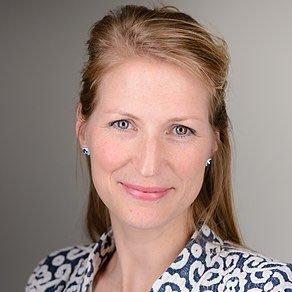
‘Work can provide support during illness’
- Margot Joosen
Subconscious neglect
“And then the pressure is high,” says researcher Hanneke van der Meide. “Moreover, we see that employers often do not know how to deal with cancer. They say with the best of intentions “take your time, get well first.” “A logical thought,” adds Joosen. “Just after the diagnosis, a patient is simply trying to survive. Everything in their lives changes; their health, their social life and their work. But it is subconscious neglect. This is exactly where work can provide a foothold. The fact that patients do not fully return or even lose their jobs is not only an individual but also a social problem.” Van der Meide: “We tend to make illness an issue of the individual: here you have a program to get back to work. While a sympathetic employer and colleagues are very important. There is a stigma on cancer.”
Tranzo and Nethlab
ZonMw finances the research that takes three years. Professor Roland Blonk is the Tilburg University project leader. Tranzo is conducting the research within the NETHLAB (Network on Labour and Health). This interdisciplinary community consists of parties with a variety of knowledge about work, labor market processes, organization, health, and participation. The research is done in the Academic Collaborative Center Labour and Health. The intervention is financed by the Health Impact Bond. The research consists of three sub-studies. Firstly, the effectiveness of the intervention is studied, secondly, secondly, for whom what works and in what context, and, finally, whether the financial method by which the intervention is funded—the Health Impact Bond—works.
Health Impact Bond
“This is one of the first Health Impact Bonds in the Netherlands,” says Van der Meide. How it works? Income insurer de Amersfoortse initiates the project because it ultimately wants people to stay in employment as much as possible. ABN Amro and Start Foundation invest in the Health Impact Bond on the basis of social considerations. If the intervention carried out by ArboNed turns out to be effective, and there is less absenteeism, this will yield money. This allows investors to recover part of their investment. Although the intervention is mainly about quality of life, a positive financial result is a bonus.”
‘We are flexible and can refine along the way so that in the end there is an intervention that is effective’
- Hanneke van der Meide
Successful interventions combined
The intervention is developed in collaboration with ArboNed and Re-turn and consists of three modules: staff welfare officers open up the dialog, then work on skills and increasing people’s confidence in their own abilities, followed by the return to work. Van der Meide: “It is based on a number of interventions that have proved successful with other target groups. Part of this is that patients are back in contact with their employer after three months. That could be no more than drinking a cup of coffee. In addition, there are conversations with the employer, employee, and a reintegration coach. The ultimate goal is an optimal reintegration of the employee. “
The process has to fit
“During the treatment this can mean, for example, that someone does not work during the week of chemotherapy but works again in the following weeks,” continues Van der Meide. “It's made-to-measure. That is also the starting moment, by the way, and those three months are not totally fixed. Every patient is different, the process has to fit. The great thing about this project is that there is room for flexibility. We don't do one controlled study. If the intervention doesn't work, you should start over again. Now we can see along the way what does and does not work and refine it so that in the end there is an intervention that is in line with practice.”
Other mindset
“The ultimate goal is to learn from the research for other target groups,” says Joosen. “Does a Health Impact Bond work? What are points of attention? And does the intervention work?” If the intervention turns out to be effective, de Amersfoortse wants to continue with it. “The great thing is that valorization goes hand in hand with research. It is not the case that we come up with a nice intervention in an ivory tower and then present it to the world. It's the other way around: the world asked for it, and we're working on impact together. This kind of research requires a different mindset. You have to consider scientific knowledge, knowledge of professionals, and knowledge of the target group as being equal. As a researcher, you must feel that you are not above the others. You do it together. “
Contact
More articles Focus on Impact
Date of publication: 13 February 2020


